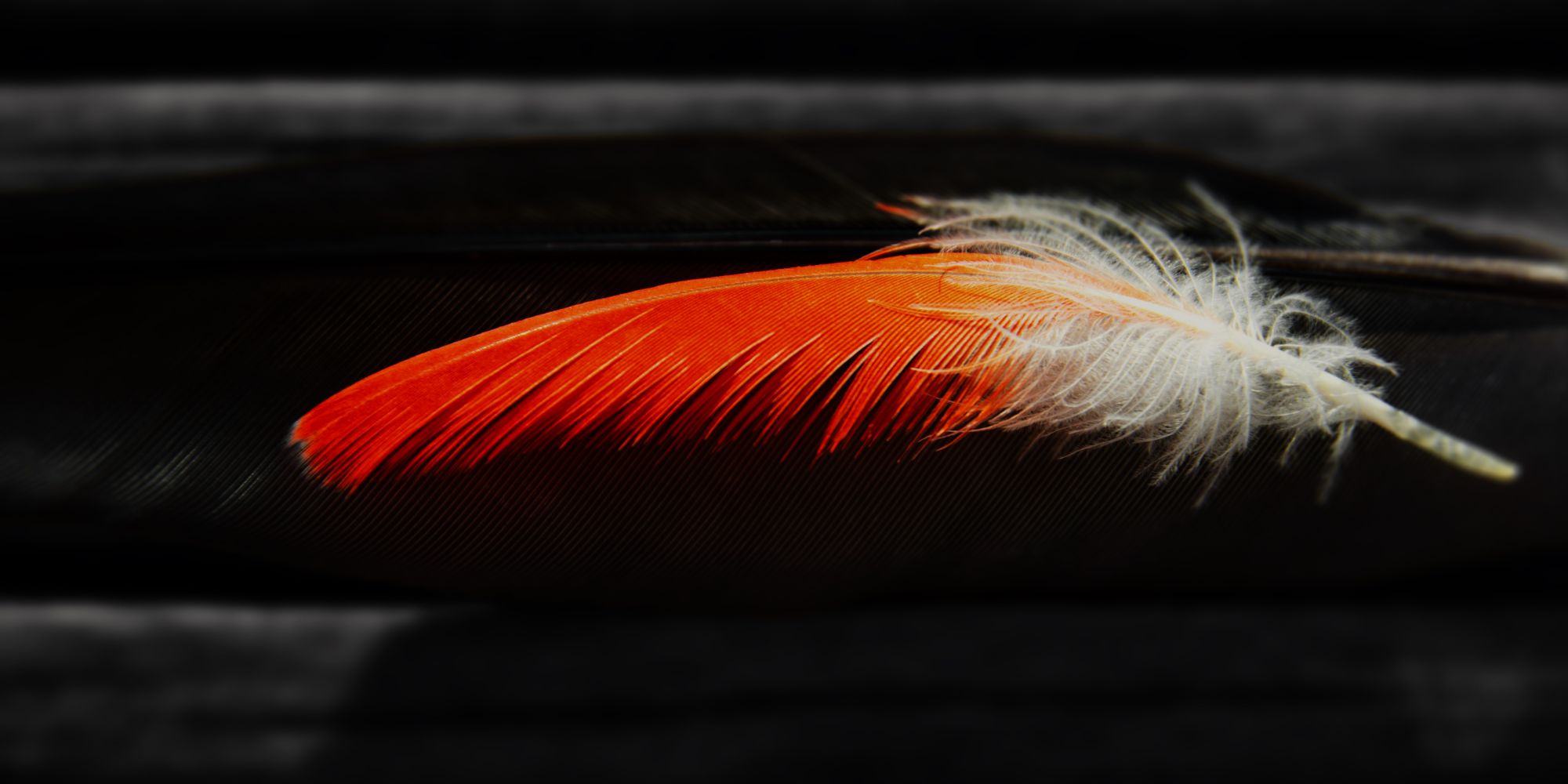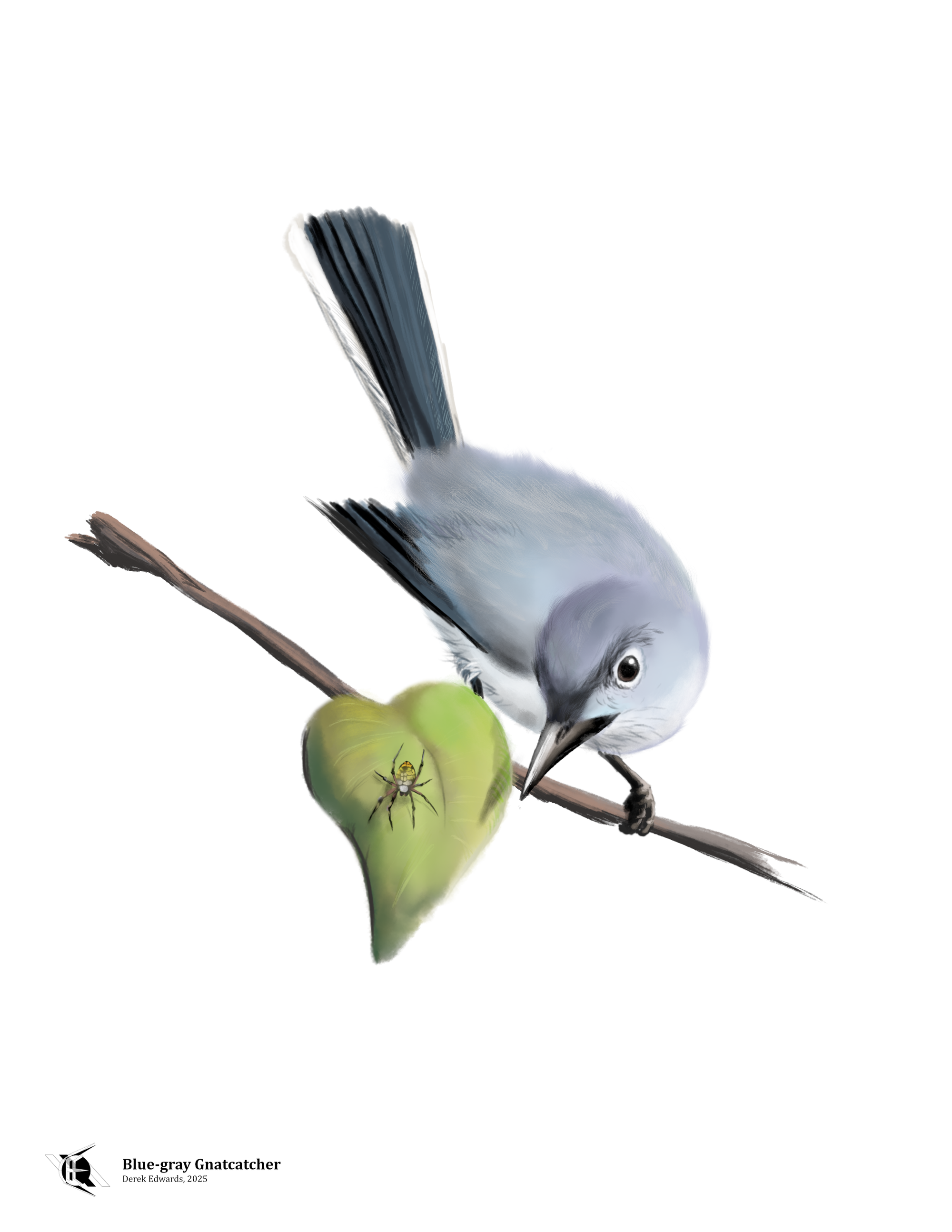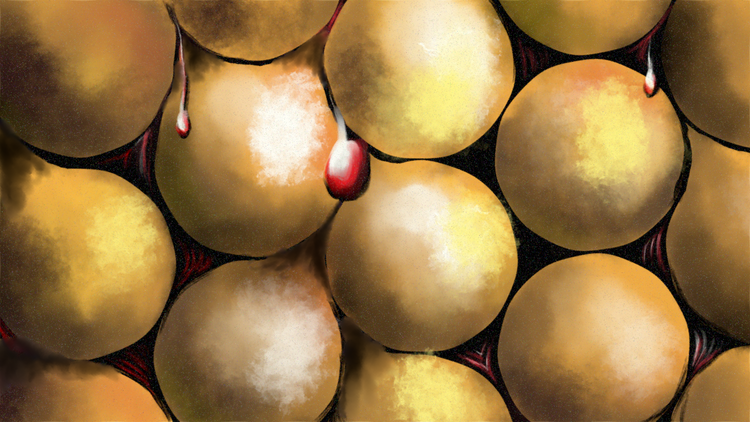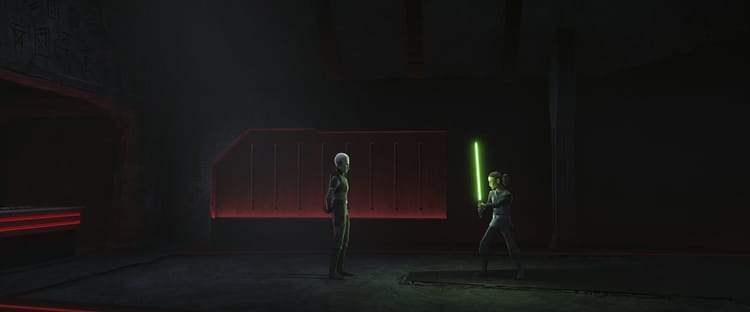
Running Commentary 5/19/2025
Hello,
It’s been a good birding spring. Last night I found a genuine flock of yellow warblers, at least six of them in a narrow area, all singing.
Speaking of birds, I've updated my page in my Notion birding log that has my birding advice.
Anyway...
Watching...

Andor
Andor is done. I’ll try to get my full review of Season 2 written as quick as I can, but for now here are my notes on the last half:
- I noticed that the out-building campus of the Imperial Senate was filmed at the same science museum in Valencia, Spain that I use a photo of as both my desktop background and as the cover photo of this site.

- The healer is, as far as I can remember, the first time this show has made direct reference to the Force. This is not really a show about the Force, but I did like the reminder of the Empire’s biggest oppression, their purge of Force-wielders, even if it does avoid referencing the Jedi.
- So, we have the end of Syril Karn. It is not the feel-good ending, but it’s one that I believe sums up the character pretty well. I’m reminded, in watching him and Meero both, really, of the dialog in Freed’s Victory’s Price about how the Empire operated on the idea that the guilty are easier to rule, so all people were made to do something against their morals at some point. In Karn’s case, he was lied to about what he was doing until it was too late, which is in keeping in keeping with his Season 1 role as the Hero with No Idea What’s Happening. Very tragic, but also a good look at how while the Empire certainly has a lot of genuinely evil people in key roles, there just aren’t enough of those to run the whole thing.
- The way the Ghorman Massacre starts and plays out is done pretty well but I must say I was expecting something more than just a street battle, something that would be bigger than the mentioned landing of Tarkin’s ship on top of protesters that happened years earlier.
- Tony Gilroy has spoken about having originally wanted a dedicated, monster-movie-type storyline to introduced K-2SO that got scrapped for time. As it stands, the way Cassian takes time to pack along a busted KX droid in the middle of a hurried escape felt a bit unnatural, like something the writers are forcing to happen without it really making a lot of sense. Apparently a comic book had given an entirely different backstory for K-2SO, and I’m not really sure we gain much here contradicting that, versus just having K-2SO show up during one of the time jumps.
- “Welcome to the Rebellion” is, essentially, a lead-in to the episode of Rebels in which Mon Mothma gives her speech publicly declaring the Rebel Alliance. We do not see the Ghost crew, but they get obliquely mentioned. I’ve seen a lot of people saying her speech got retconned here, which I disagree with. Her speech in the Senate was her denunciation of Palpatine and the Empire, whereas her speech at the end of “Secret Cargo” is her calling for allies against the Empire and toward a restoration of the Republic. One doesn’t displace the other.
- It was nice to see the show’s main characters all finally meet one another.
- So Bix is to this show what Ahsoka was to The Clone Wars: a character whom it seemed obvious would die based on her absence in a later-set, earlier-released work, but who actually just leaves the story toward the end. I’m happy she gets to survive, apparently.
- Lonnie Jung was “found dead in a park across town”, which rather raises the question what “across town” means in a Coruscanti context.
- Title character Cassian Andor does not appear in “Make It Stop”.
- I’m surprised Luthen doesn’t have, like, a cyanide tooth or something, given how paranoid he is. The whole sequence of Kleya infiltrating the hospital played really well, but it was predicated on Luthen botching his suicide. Guess he forgot he was in Star Wars, where critical stab wounds don’t kill people all that often.
- The alien Kleya wheels around for a bit on the elevator looks quite a bit like E.T. Of course, E.T.’s species appears in background shots of the Prequels as a nod from Lucas to his friend Spielberg, but I suppose there’s more you can get away with, legally, in the background of scenes than in the foreground.
- I really wish K-2SO could have been introduced in the show earlier. He’s such a great character in Rogue One and now, finally, here in Andor.
- “Jedha, Kyber, Erso” is technically the official finale of the series, but really to complete the story you need to watch Rogue One, as Cassian’s last scene is him heading off to the Ring of Khafrene, as we see in the opening of that film.
- We do see some endings, of sorts, for other characters not appearing in Rogue One.
- Meero we find in an Imperial prison, apparently Narkina 2. This could be the end of her story, but I think something could be done with her getting released as part of a mass liberation of Imperial political prisoners after the war; the ISB had mentioned that they were locking more people up than they could process, which would mean there’s more people than the New Republic could properly review. It’s not a certainty — I could easily see a purge of all prisoners being a part of Project: Cinder, for example — but there’s an opening for a future story there.
- A bit more directly sequel-baity is the revelation that Cassian had a kid. I don’t think we’ll be seeing more of Bix and Andor, Jr. in the immediate future, but I think we’ll get something someday. I’m glad B2-EMO didn’t get abandoned.

Bird of the Week
The bird I’ve drawn here is the 170th species I’ve personally observed in the wild. 170 is not a huge number of birds to have seen, but for someone like myself who’s only been seriously birding for about five years and who hasn’t traveled much, it’s respectable. At least, I hope it’s respectable enough to allow me to give some birding advice that has helped me identify many strange birds, including the latest one I’ve seen: the Blue-gray Gnatcatcher.
This gnatcatcher — the blue-gray is the only one found in the eastern US — had long-been on my list of target birds, though I had no real plan to find it. Michigan is in the northern reach of its breeding range, but they’re still commonly reported here, albeit sporadically. Gnats are small flies, so it follows that gnatcatchers would be small flycatchers. This is kind of true. gnatcatchers are small, smaller than flycatchers or most other songbirds. They are drably colored, as flycatchers tend to be. They feed on small insects and spiders, sometimes grabbing them on-the-wing as flycatchers do, but also often gleaning prey from leaves, like wood-warblers. They share warbler’s more horizontal posture compared to the upright-sitting flycatchers. Genetically they are most like the wrens, with whom they share long thing bills and prominent tails. This all comes together to make a bird that’s both quite recognizable if you know what you’re looking for and easily mistaken for other things if you don’t.
I finally saw a gnatcatcher on Mother’s Day. And actually, credit where it’s due, I didn’t spot it first; my mother did. That’s actually often the case; she’s better at spotting birds than I am, though I’m better with binoculars and more prepared to identify what she sees. Anyway, we were on a Mother’s Day picnic and she pointed out a little bird flitting through the trees near a creek. When I looked, I at first thought it was a warbling vireo. I could see that it was pale gray, I could see that it hardly held still, and I could tell it wasn’t a warbler. But it wasn’t singing, which vireos constantly do, and it had a long tail that I didn’t remember the vireo having. Eventually, the bird flew off, and as I was consulting my bird guide I found the blue-gray gnatcatcher and recognized my bird. The guide even mentioned things like the tail-flicking and tendency to be found near water that matched my observation.
Note that I didn’t know what the bird was as I was looking at it. That’s because I was following the advice I’d like to pass on to you now: watch a bird while it’s visible, and only reference a guide after you’ve gotten as good a look at it as you can. Somehow it’s human instinct to try to ID a bird as soon as possible, while it’s still there, which leads beginning birders to immediately pull out their guide and start glancing back and forth, often losing track of the bird in the process. There’s no need for this. Many of the birds I’ve seen for the first time went unidentified until I got home and had the chance to sit down and research. That’s fine. The point of birdwatching is to watch birds, not to read in the middle of the woods. Even if you never figure out the proper name for the bird, it’s better to be able to say what you saw in descriptive detail than to only say you saw something but mostly were just checking a book or your phone. Watch birds, ID them later if necessary.
To science, the blue-gray gnatcatcher is Polioptila caerulea. Linnaeus originally called it Motocilla caerulea, or “blue wagtail”; the wagtails are thrush-sized, mainly ground-dwelling birds which bear a passing resemblance to the gnatcatchers but which pretty clearly aren’t the same thing. No surprise then that a later scientist, P.L. Sclater, placed this and the other gnatcatchers in a new genus, whose name is simply Greek for “gray-feathered”.1 Thus “blue” and “gray” are combined in the bird’s scientific name as well. Polios, meaning “pale gray” in Greek, is also the root of the name of the disease poliomyelitis, often shortened simply to “polio”; poliomyelitis literally means “disease of the gray marrow” because it affects the gray matter within the spinal column.2
- Jobling, J. A. (editor). The Key to Scientific Names in Birds of the World (S. M. Billerman et al. editors), Cornell Laboratory of Ornithology, Ithaca.
- Merriam-Webster.com Dictionary, s.v. “poliomyelitis,” accessed May 19, 2025, https://www.merriam-webster.com/dictionary/poliomyelitis.
Curation Links
The Golden Age of Japanese Pencils, 1952-1967 | Carson Monetti, Studio Notes
Today Japan is known as the only country making pencils that can rival those of Germany, but it hasn’t been in the pencil-making game nearly as long as Nürnberg. Here we have a fairly complete history of the Japanese pencil industry, particularly the Mitsubishi Pencil Co. and Tombow, which arose out of the post-war era and are still going strong to this day.
Colossal Squid, 1st Live Observation | Kat Bolstad, Schmidt Ocean
[VIDEO] “Mesonychoteuthis hamiltoni was formally described and named 100 years ago, in 1925, based on two partial specimens found in the stomach of a sperm whale near the South Shetland Islands. However, no one has ever captured footage of a living colossal squid until now. Seabirds, marine mammals, and fishes prey on juvenile colossal squid. At full size, their only known predators are sperm whales and sleeper sharks, although remains of large adults have also been found in toothfish stomachs, likely scavenged. Experts believe colossal squid may reach total lengths of 6 to 7 meters and weigh about as much as a small Italian Fiat at more than 500 kilograms, making them the heaviest known invertebrate. Dr Kat Bolstad, associate professor and lab leader of the Auckland University of Technology Lab, NZ, worked with glass squid expert Dr. Aaron Evans to help confirm this observation, and she narrated this video.” (one-and-a-half minutes)
The Moral Authority of a Body | Justin Smith-Ruiu, The Metropolitan Review
“That’s the top-down aspect of the problem: the way the state shapes our bodies whether we are aware of it or not, whether these are the haggard bodies of tenant farmers in India neglected by their government, or the fat bodies of Texans minimally sustained on highly processed combinations of corn and soy. I would also like to think about the ideology at work in this latter case, the way advertising and the history of colonialism conspire to convince many a Texan that theirs is rightly and naturally a place where, as the saying goes, ‘Everything’s bigger’”
Tie A Yellow Ribbon | Harry Turtledove, Reactor
[FICTION] From the master of alternative history, we have the story of an American diplomat in 1980 returning home from captivity in Tehran, home to the land of his people, the sasquatches.
See the full archive of curations on Notion






Member Commentary